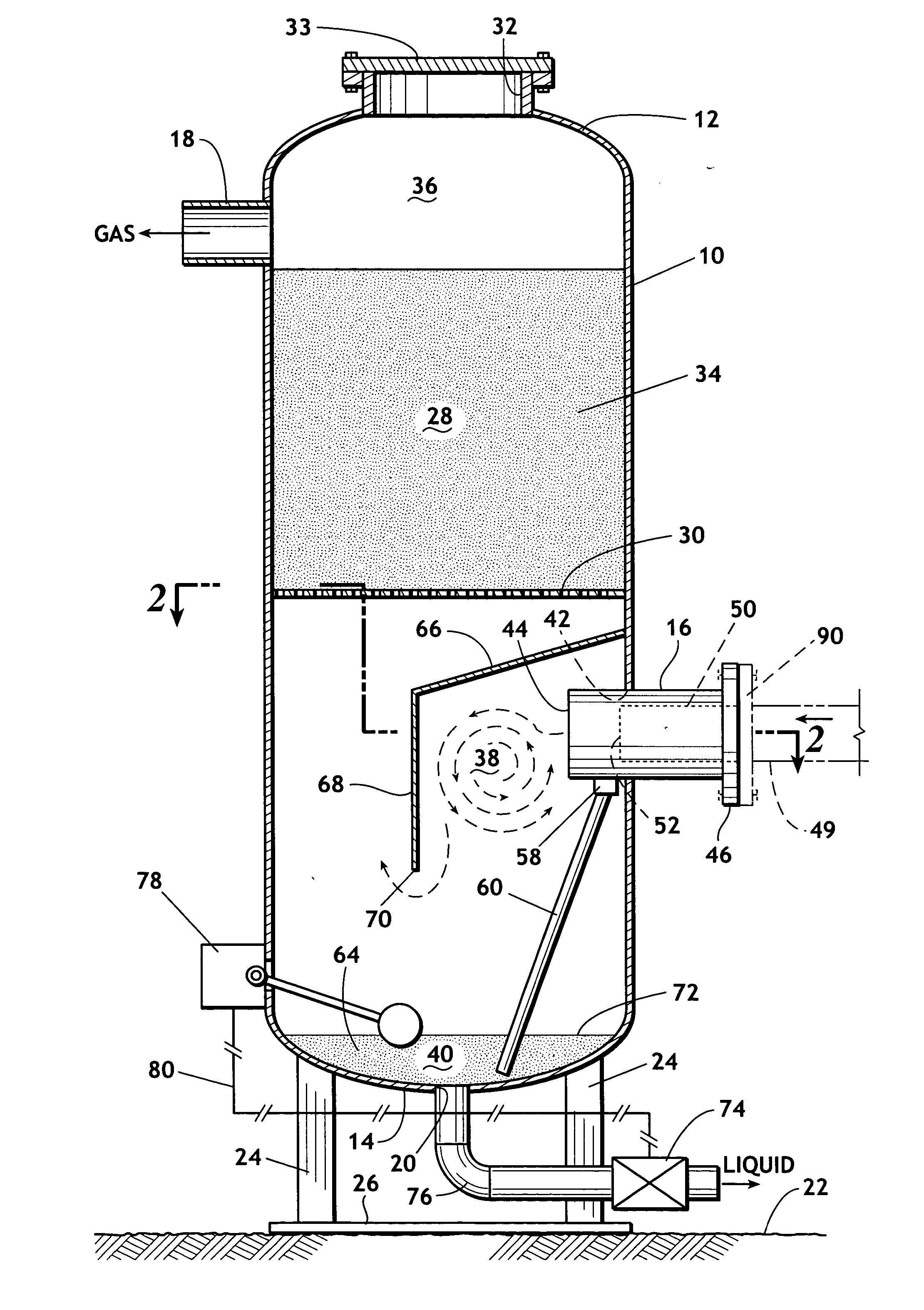Dehydration of wet gas utilizing intimate contact with a recirculating deliquescent brine
a technology of deliquescent brine and wet gas, which is applied in the field of wet gas dehydration, can solve the problems of reducing reducing the problem of transportation, processing and ultimate use of natural gas, and brine accumulated in the process has a strong tendency to recrystallize. , to achieve the effect of reducing recrystallization and improving the efficiency of deliquescent material us
- Summary
- Abstract
- Description
- Claims
- Application Information
AI Technical Summary
Benefits of technology
Problems solved by technology
Method used
Image
Examples
Embodiment Construction
follows in conjunction with the attached drawings.
BRIEF DESCRIPTION OF THE DRAWINGS
[0016]FIG. 1 is an elevational cross-sectional view of an upstanding dehydration contact tower arranged to dehydrate a wet gas stream utilizing a deliquescing salt process and which provides for recycling brine that is produced by the process. The brine recirculation process achieves improved efficiency of water absorption and dilution of the brine to thereby reduce recrystallization of the brine.
[0017]FIG. 2 is a horizontal cross-sectional view taken along the line 2-2 of FIG. 1.
[0018]FIG. 3 is an enlarged partial cross-sectional view taken along the line 3-3 of FIG. 2, showing more details of the venturi-forming wet gas inlet.
[0019]FIG. 4 is a fragmentary cross-sectional view of an alternate embodiment showing the venturi-forming portion of the wet gas inlets arranged in a way that permits easy exchange of different venturi tubes.
[0020]FIG. 5 is a fragmentary cross-sectional view of another alt...
PUM
| Property | Measurement | Unit |
|---|---|---|
| pressure | aaaaa | aaaaa |
| length | aaaaa | aaaaa |
| diameter | aaaaa | aaaaa |
Abstract
Description
Claims
Application Information
 Login to View More
Login to View More - R&D
- Intellectual Property
- Life Sciences
- Materials
- Tech Scout
- Unparalleled Data Quality
- Higher Quality Content
- 60% Fewer Hallucinations
Browse by: Latest US Patents, China's latest patents, Technical Efficacy Thesaurus, Application Domain, Technology Topic, Popular Technical Reports.
© 2025 PatSnap. All rights reserved.Legal|Privacy policy|Modern Slavery Act Transparency Statement|Sitemap|About US| Contact US: help@patsnap.com



